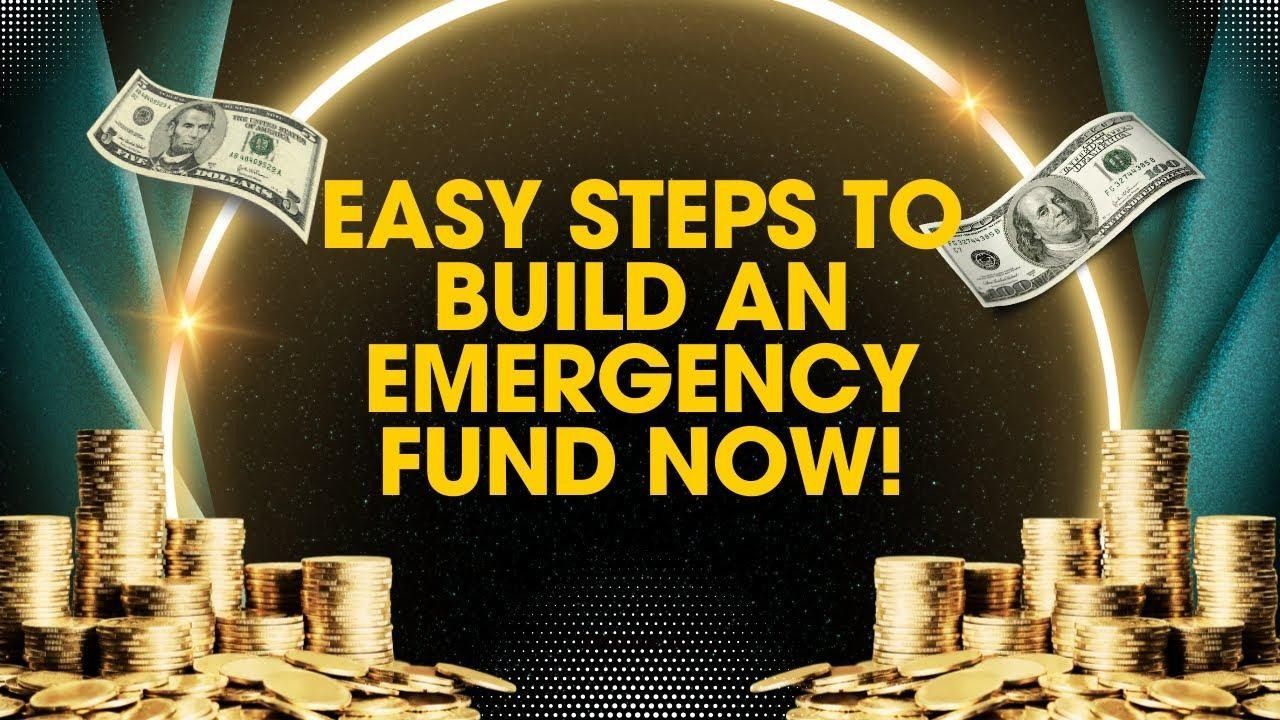

In today’s uncertain economic climate, having a robust emergency fund is more crucial than ever. Let’s learn more about this topic below with Life The Game, as we explore effective strategies to rapidly build your financial safety net.
An emergency fund serves as a financial buffer, providing peace of mind and security during unexpected situations. Whether it’s a sudden job loss, medical emergency, or unforeseen home repairs, having readily available funds can make a significant difference in how you navigate these challenges. Life The Game emphasizes the importance of being prepared for life’s uncertainties, and an emergency fund is a key component of this preparedness.
Financial experts typically recommend having three to six months’ worth of living expenses saved in an easily accessible account. However, the exact amount may vary depending on individual circumstances, such as job stability, family size, and overall financial obligations. The goal is to have enough funds to cover essential expenses during a period of financial hardship without resorting to high-interest debt or compromising your long-term financial goals.
Building an emergency fund quickly requires a combination of disciplined saving, smart budgeting, and creative income generation. Here are some effective strategies to help you achieve your emergency fund goals in a shorter timeframe:
Before embarking on your emergency fund journey, it’s crucial to have a clear understanding of your current financial standing. Start by calculating your monthly expenses, including fixed costs like rent or mortgage payments, utilities, and insurance premiums, as well as variable expenses such as groceries, transportation, and entertainment. This assessment will help you determine the target amount for your emergency fund and identify areas where you can potentially cut back on spending.
Next, evaluate your income sources and any existing savings. If you have multiple bank accounts or investments, consider consolidating them to get a better overview of your financial resources. Life The Game encourages players to regularly review their financial status, as this practice can help identify opportunities for improvement and growth.
Once you have a clear picture of your finances, it’s time to create a dedicated savings plan for your emergency fund. Set a specific savings goal and timeline, breaking it down into manageable monthly or weekly targets. Automating your savings can be an effective way to ensure consistent contributions to your emergency fund. Set up automatic transfers from your checking account to a separate savings account designated for your emergency fund.
Consider using high-yield savings accounts or money market accounts for your emergency fund. These accounts typically offer higher interest rates than traditional savings accounts, allowing your money to grow faster while remaining easily accessible. Research different financial institutions to find the best rates and terms that suit your needs.
To accelerate your emergency fund growth, focus on both reducing expenses and increasing your income. Start by analyzing your spending habits and identifying areas where you can cut back. This might include eliminating unnecessary subscriptions, reducing dining out expenses, or finding more cost-effective alternatives for your regular purchases.
On the income side, consider taking on a part-time job, freelancing, or selling unused items to generate additional funds. Life The Game often presents players with opportunities to boost their income through various side hustles and entrepreneurial ventures. Apply this mindset to your real-life situation by exploring ways to monetize your skills or hobbies.
In today’s digital age, numerous apps and tools can help you streamline your savings process and stay motivated. Budgeting apps like Mint or YNAB (You Need A Budget) can help you track your expenses, set savings goals, and monitor your progress. These apps often provide insights into your spending patterns and offer suggestions for improving your financial habits.
Some banks offer round-up savings features, where your purchases are rounded up to the nearest dollar, and the difference is automatically transferred to your savings account. This passive saving method can add up quickly over time, contributing to your emergency fund without requiring much effort on your part.
Additionally, consider using cashback apps or credit cards that offer rewards on your everyday purchases. While it’s important to use credit responsibly, the cashback or rewards earned can be directed towards your emergency fund, providing an extra boost to your savings efforts.
Building an emergency fund quickly requires consistent effort and dedication. To maintain motivation throughout the process, consider the following strategies:
Create a visual representation of your savings progress, such as a savings thermometer or a progress bar. This visual aid can serve as a constant reminder of your goals and how far you’ve come. Life The Game often incorporates visual progress indicators, which can be a powerful motivational tool when applied to real-life financial goals.
Set smaller milestones along the way to your ultimate emergency fund goal. Celebrate these achievements, no matter how small, to maintain a positive attitude and momentum. These celebrations don’t have to be expensive; they can be as simple as treating yourself to a favorite meal or activity.
Continue to educate yourself about personal finance and emergency preparedness. Read books, attend webinars, or listen to podcasts on these topics. The more you understand the importance of financial security, the more motivated you’ll be to achieve your goals. Life The Game often rewards players for acquiring new knowledge and skills, and this principle applies equally to real-life financial education.
Consider sharing your emergency fund goals with trusted friends or family members. Having a support system can provide accountability and encouragement throughout your savings journey. You might even find others who are interested in joining you in building their own emergency funds, creating a sense of community and shared purpose.
In conclusion, building an emergency fund quickly requires a combination of strategic planning, disciplined saving, and creative thinking. By implementing the strategies outlined in this article and staying committed to your goals, you can create a robust financial safety net in a shorter timeframe. Remember that building an emergency fund is not just about reaching a specific number; it’s about creating a sense of financial security and peace of mind that will benefit you in both the short and long term.
As you progress in your emergency fund journey, keep in mind the lessons learned from Life The Game. Approach your financial goals with the same determination, adaptability, and strategic thinking that you would apply in the game. With persistence and the right strategies, you can achieve financial security and be better prepared for whatever life may throw your way.